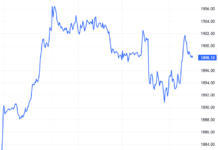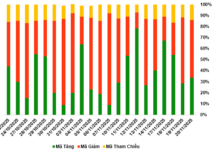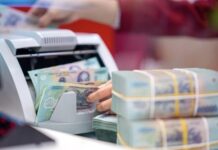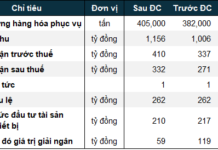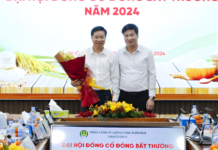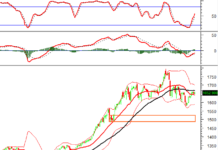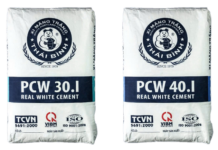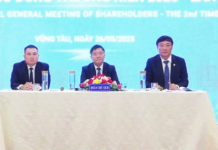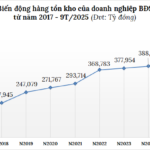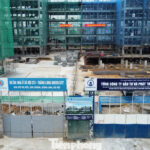
Mr. Pham Tien Dung, Deputy Governor of the State Bank of Vietnam, speaks at the seminar. (Photo: Vietnam+)
|
Speaking at the seminar titled “QR Code Payments: Transparency and Unlimited Experience,” organized by Vietnam Economic Times and the National Payment Corporation of Vietnam (NAPAS) on the afternoon of November 19, Mr. Pham Tien Dung, Deputy Governor of the State Bank of Vietnam, stated that all goods and services in Vietnam, from a cup of tea to a bunch of vegetables, can be paid for using QR codes. Buyers simply use their smartphones to scan the seller’s QR code for quick and easy payment.
From a novel technology to a widespread payment habit
At the seminar, the Deputy Governor of the State Bank of Vietnam shared his profound impressions of witnessing the development of QR code payments in China in 2017.
He recalled seeing people, even beggars, using QR codes to receive money from online transactions. This inspired him to bring this technology to Vietnam, where today, paying for a cup of tea on the sidewalk is as simple as scanning a QR code.
The Deputy Governor emphasized that QR code payments have now become a habit for Vietnamese citizens, from street vendors to high-end services.
QR codes, once a novel technology, now play a crucial role in building Vietnam’s payment infrastructure.
As of September 2025, cashless payments reached over 17.8 billion transactions, with domestic QR code payments totaling 337 million transactions worth 288 trillion VND, a significant increase from the previous year. NAPAS, a key player in processing payment transactions, handled over 8.3 billion transactions with a total value of 47.53 quadrillion VND.
Specifically, NAPAS processed over 8.3 billion transactions by the end of September 2025, with a total value of 47.53 quadrillion VND. On peak days, the system reached a capacity of over 42.5 million transactions per day with an availability rate of 99.997%.
Thanks to its simplicity, fast processing speed, high security, and the readiness of credit institutions, QR codes have become a preferred payment method for many consumers and businesses.
The growth of QR codes benefits both consumers and businesses. With simple operations, quick processing, and high security, QR codes offer a convenient and safe payment method. Beyond domestic use, Vietnam has expanded QR code payment connectivity to countries like Thailand, Laos, and Cambodia. Notably, countries such as China, South Korea, Singapore, India, and Taiwan are expected to join this payment system in 2025-2026.
 Overview of the seminar. (Photo: Vietnam+)
|
However, challenges remain in implementation. One major issue is the lack of interoperability among different QR code providers. This causes inconvenience for customers, as each QR code issuer typically only supports transactions within its own system, without connectivity to others.
Deputy Governor Pham Tien Dung also noted that, despite the rapid growth of QR code payments, they have not yet fully replaced cash or credit card payments in certain sectors.
Challenges and barriers to overcome
To address these issues, Mr. Pham Anh Tuan, Director of the Payment Department at the State Bank of Vietnam, proposed several key solutions. First, expanding the network of QR code payment acceptance points is essential to meet the growing demands of citizens and businesses. Additionally, encouraging merchants to use QR codes for payment of goods and services, rather than just personal transfers, is crucial.
Next, enhancing cooperation among different QR code providers to ensure interoperability is vital for customer convenience. This will make QR code payments a widely accessible and popular method, regardless of the app used by consumers.
Furthermore, implementing cross-border payment connectivity with countries like China, South Korea, Singapore, India, and Taiwan will open significant opportunities for international markets, facilitating international trade and tourism transactions.
At the seminar, delegates also emphasized that to expand international connectivity, combat money laundering, and control budget revenue, Vietnam should accelerate the transition from QR transfer (transfer) to QR payment (QR Pay) to align with international standards and modern management requirements.
Ms. Phan Thi Thanh Nhan, Director of the Card and Operations Center at BIDV, highlighted that costs and user habits are significant barriers. Currently, P2P transactions via QR codes are often free, benefiting users and small merchants. However, QR Pay transactions incur fees ranging from 0.8% to 1%, similar to credit card fees, which may deter merchants, especially small traders.
 Ms. Phan Thi Thanh Nhan, Director of the Card and Operations Center at BIDV, speaks at the seminar. (Photo: Vietnam+)
|
To address this, Ms. Nhan suggested that banks, NAPAS, and small merchants share costs during the initial implementation phase. Additionally, the State Bank of Vietnam should closely monitor QR code payment deployment to ensure transparency, protect consumer rights, and promote a more effective transition to the QR Pay model.
Delegates stressed that QR code payments are increasingly vital to Vietnam’s payment system. With robust growth and immense potential, especially in international connectivity, QR codes offer limitless convenience for consumers and businesses.
However, for this method to become an integral part of daily life, challenges related to costs, system interoperability, and user awareness must be addressed. Close collaboration among issuers, regulatory bodies, and consumers will be key to the sustainable development of QR code payments in the future.
Thuy Ha
– 20:01 19/11/2025
Vietnam’s Race to Join the Global Semiconductor Map: Can It Keep Pace as the World Shifts?
Global supply chain disruptions and robust policy commitments present a unique opportunity for Vietnam to emerge as a leader in the semiconductor industry, the backbone of the digital economy. However, this potential can only be realized if Vietnam successfully navigates challenges in workforce development, infrastructure enhancement, and regional FDI competition.

